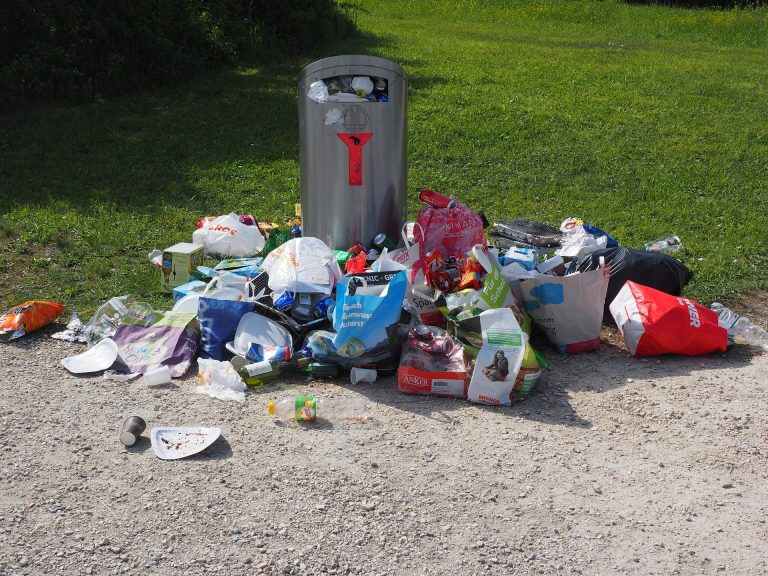The Fascinating World of Garbology: Uncovering Insights through Waste
Introduction
Garbology, the study of modern refuse and waste, offers a unique lens through which researchers delve into contemporary human behavior, consumption patterns, and environmental impacts. Originating in the mid-20th century, the field has evolved from a niche interest to a multidisciplinary endeavor encompassing anthropology, archaeology, sociology, environmental science, and beyond. This article explores the significance of garbology in understanding societal trends, environmental challenges, and the potential for sustainable practices in waste management.

History of Garbology
The term “garbology” was first coined by archaeologist William Rathje in the 1970s during his pioneering studies at the University of Arizona’s Garbage Project. Rathje and his team examined landfills to uncover insights into consumer habits, economic disparities, and cultural norms through the analysis of discarded items. Their findings challenged common perceptions about waste composition and disposal practices, highlighting discrepancies between what people reported consuming and what ended up in landfills.
Over the decades, garbology expanded beyond archaeology to include urban waste studies, recycling initiatives, and the exploration of waste’s role in environmental degradation. The interdisciplinary nature of garbology now involves collaborations between scientists, social scientists, policymakers, and industry leaders to address global waste management challenges.
Methods and Approaches in Garbology
Garbologists employ various methodologies to investigate waste streams and their implications. Anthropological approaches focus on ethnographic studies of waste disposal practices within communities, revealing cultural attitudes towards consumption and disposal. Archaeological methods involve the excavation and analysis of historical landfills to trace changes in material culture and environmental impact over time.
Modern garbology integrates advanced technologies such as GIS (Geographic Information Systems), remote sensing, and chemical analysis to map waste distribution, identify pollution hotspots, and quantify environmental impacts. These techniques facilitate informed decision-making in waste management and policy development.

Insights from Garbology
The insights garnered from garbological studies are manifold and profound. By analyzing waste composition, researchers can estimate resource consumption patterns and identify trends in product use and disposal. For example, studies have shown a significant increase in electronic waste (e-waste) due to rapid technological advancements and planned obsolescence in consumer electronics.
Moreover, garbology sheds light on socioeconomic disparities in waste generation and disposal. Low-income communities often bear a disproportionate burden of waste accumulation and lack access to adequate recycling facilities, exacerbating environmental injustices. Understanding these disparities is crucial for developing equitable waste management policies and promoting environmental justice initiatives.
Environmental Impacts and Sustainability
The environmental consequences of unchecked waste disposal are profound and far-reaching. Landfill sites emit greenhouse gases such as methane, contributing to climate change. Plastic waste, in particular, poses a severe threat to marine ecosystems, with millions of tons entering oceans annually, endangering marine life and disrupting fragile ecosystems.
Garbology plays a pivotal role in advocating for sustainable practices and circular economy principles. By promoting recycling, composting, and waste reduction strategies, researchers and policymakers aim to minimize environmental degradation and conserve natural resources. Innovations in waste-to-energy technologies offer promising alternatives to traditional landfill disposal, transforming waste into renewable energy sources.

Challenges and Future Directions
Despite its advancements, garbology faces several challenges in addressing global waste management issues. Rapid urbanization, population growth, and industrialization contribute to increased waste production, straining existing infrastructure and exacerbating environmental degradation. Inadequate waste disposal regulations and enforcement further complicate efforts to mitigate waste-related impacts.
Looking ahead, interdisciplinary collaborations and technological innovations are key to advancing garbological research and implementing sustainable waste management practices globally. Educating the public about responsible consumption and waste reduction is essential for fostering a culture of environmental stewardship and promoting behavioral change.
Conclusion
Garbology continues to evolve as a critical field of study, offering valuable insights into human behavior, societal trends, and environmental impacts through the analysis of waste. By exploring the composition, distribution, and cultural significance of refuse, researchers contribute to the development of sustainable waste management strategies and advocate for a cleaner, healthier planet.
As we navigate the complexities of a globalized world, the principles of garbology provide a framework for understanding our relationship with waste and envisioning a future where resource conservation and environmental stewardship are prioritized. Through interdisciplinary collaboration and community engagement, we can collectively address the challenges posed by waste and pave the way towards a more sustainable future for generations to come.

